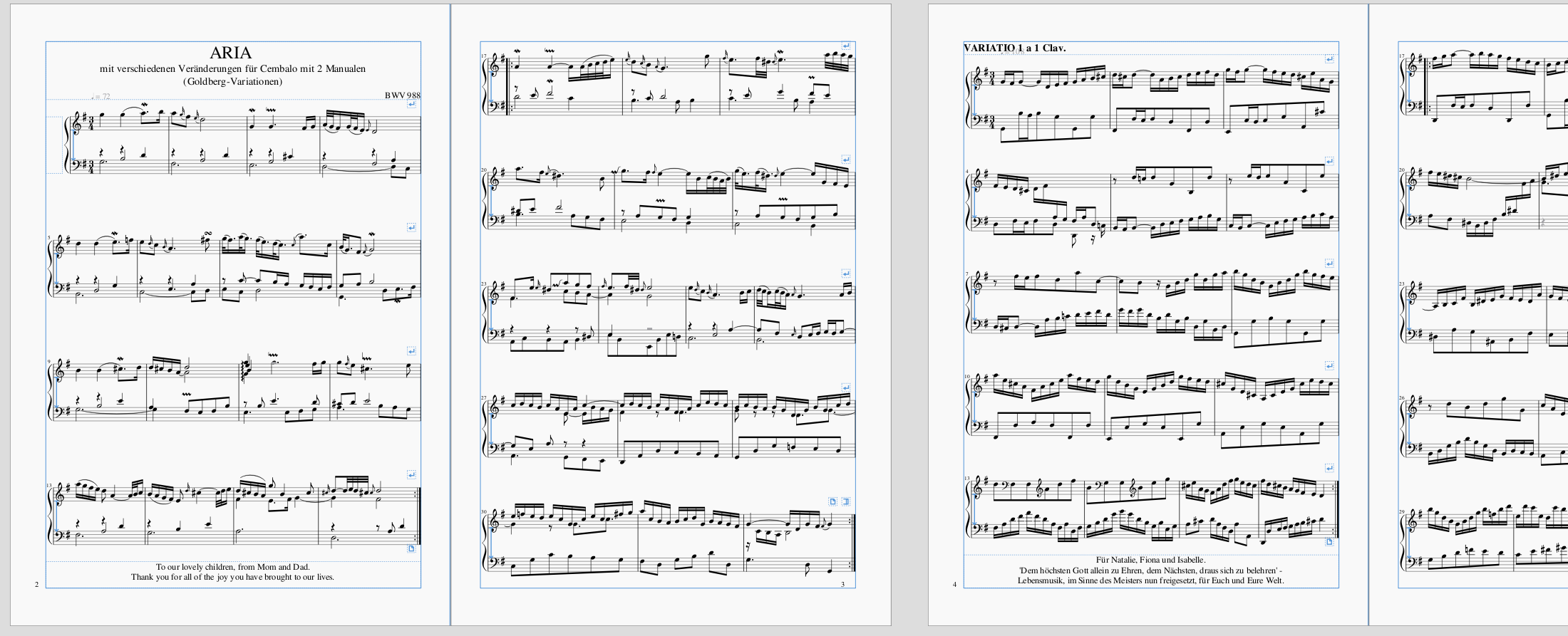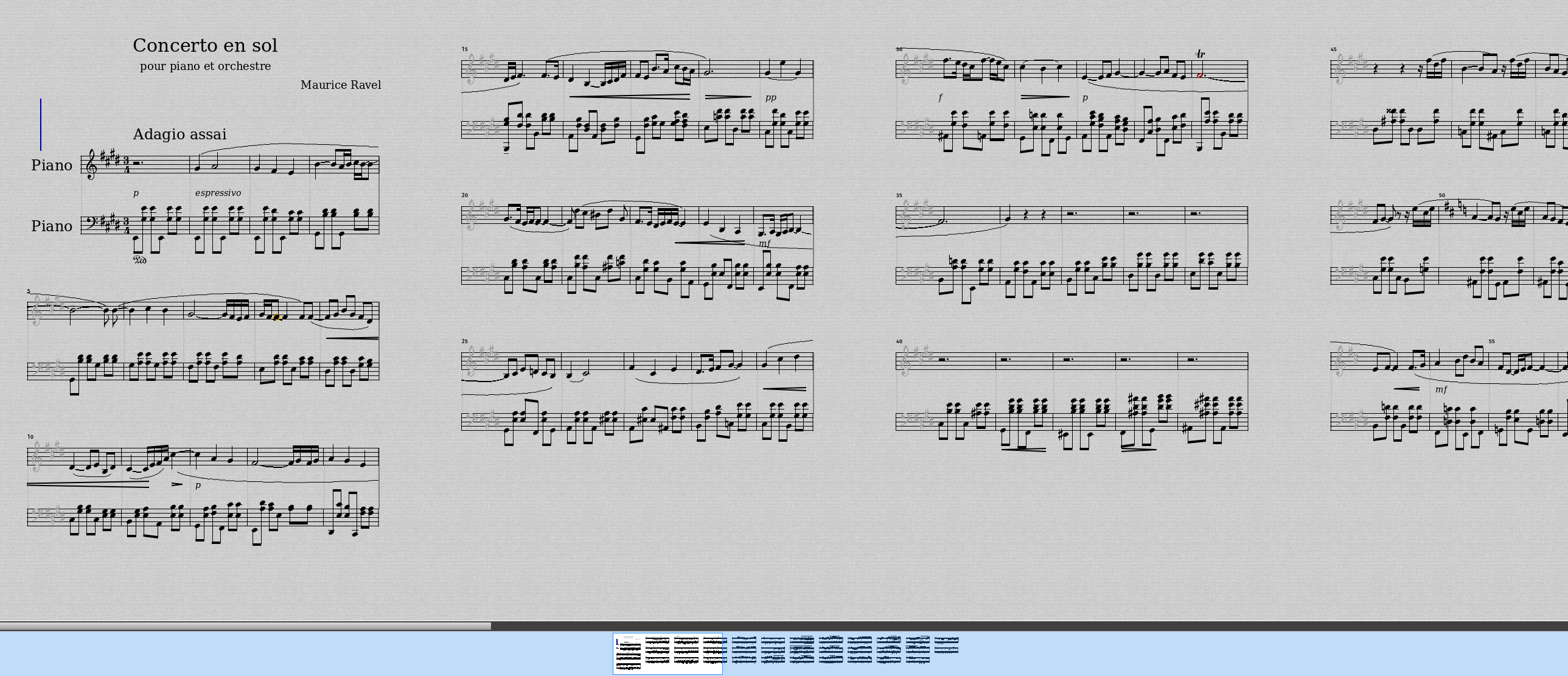On Displaying Musical Scores » History » Version 18
« Previous -
Version 18/26
(diff) -
Next » -
Current version
Chris Cannam, 2016-01-07 04:58 PM
On Displaying Musical Scores¶
Use cases¶
- Illustrating recordings by attaching a full publication-style score
- ...where the score is not intended to be read closely, but rather used as a sort of key-frame reference for navigating the audio
- ...or where user expects to be able to zoom the score far enough to actually read it properly
- Linear rather than page-based score that a user is expected to read, e.g. to play along with, or to check specific notes in a transcription or spectrogram
- On-the-fly score display of transcriptions and related annotation layers (score from MIDI)
- Score editing for correction (making usually small edits to substantial scores)
- Score editing for annotation (generating small scores from scratch)
Sources of score data¶
- Score-encoding formats, e.g. MusicXML, MEI
- PDFs of published scores
- "Tidy" MIDI files and other cleaned-up annotation data (e.g. chord charts)
- Untidy output from transcription methods and the like, in MIDI or MIDI-like formats
Possible implementations¶
- Integrate code from an existing application (most likely one that is also in C++ using Qt)
- Suitable for all use cases, with limitation of requiring score to be available in a digital format
- Only possibility if editing is required (but note that adding editing is likely to be very involved even with this approach, maybe prohibitively so)
- MuseScore -- most obvious option
- Rosegarden -- has a notation editor component but is primarily a sequencer (but does have the advantage that I wrote much of it and so know a lot of the code!)
- Invoke external application to render to PDF or sequence of images, then display PDF/image pages
- Suitable for use case 1; unsuitable for use cases 2, 4, 5; uncertain for use case 3
- Replaces problem of "integrating score display" with problem of "integrating PDF/image page display"
- Could use MuseScore as the external application (it has a batch mode) or Lilypond, or something else like VexFlow, or more than one option depending on platform & input format
- Has advantage of also introducing ability to display other PDF material than scores
- Adds access to non-digital (scanned) score content
Both have their technical challenges, but there is also a conceptual question about how to align score pages or bars in the time axis (more on this below).
Which code to use for option 1?¶
I think the only reasonable options are MuseScore and Rosegarden. MuseScore produces much better output and has fairly well-organised code. Rosegarden has a more limited renderer and currently lacks MusicXML import. The only reason to consider anything other than MuseScore is that I'm quite familiar with the Rosegarden code myself already. At any rate, Rosegarden makes a useful baseline comparison.
Here are some examples, deliberately choosing small sizes in order to see how a zoomed-out scale looks, and considering both linear and paginated layouts.
Linear layouts with "good" source material¶
Both applications are displaying their own example files here, so we have two different pieces but both are pieces that are expected to work well.
MuseScore¶

Rosegarden¶

Paginated layouts with "good" source material¶
Same pieces as above.
MuseScore¶

Rosegarden¶

Imported from an approximate transcription¶
This is an input that is not expected to work well -- a transcription obtained from the Silvet Vamp plugin of a MAPS database recording of Chopin mazurka op 7 no 1, exported to MIDI. Shown below is the result of taking that MIDI file as exported by Sonic Visualiser and importing it into each application with the default quantization/tidying settings.
Despite their substantially different appearances, these are both displaying the same MIDI data. Besides quantization differences, they use different numbers of staffs and different clefs, keys, and time signatures. None of those are given in the MIDI file here and both programs contain logic to guess them. MuseScore has guessed the wrong key (according to the original score) but the right time signature. Rosegarden has the right key but the wrong time signature.
MuseScore¶

Rosegarden¶
